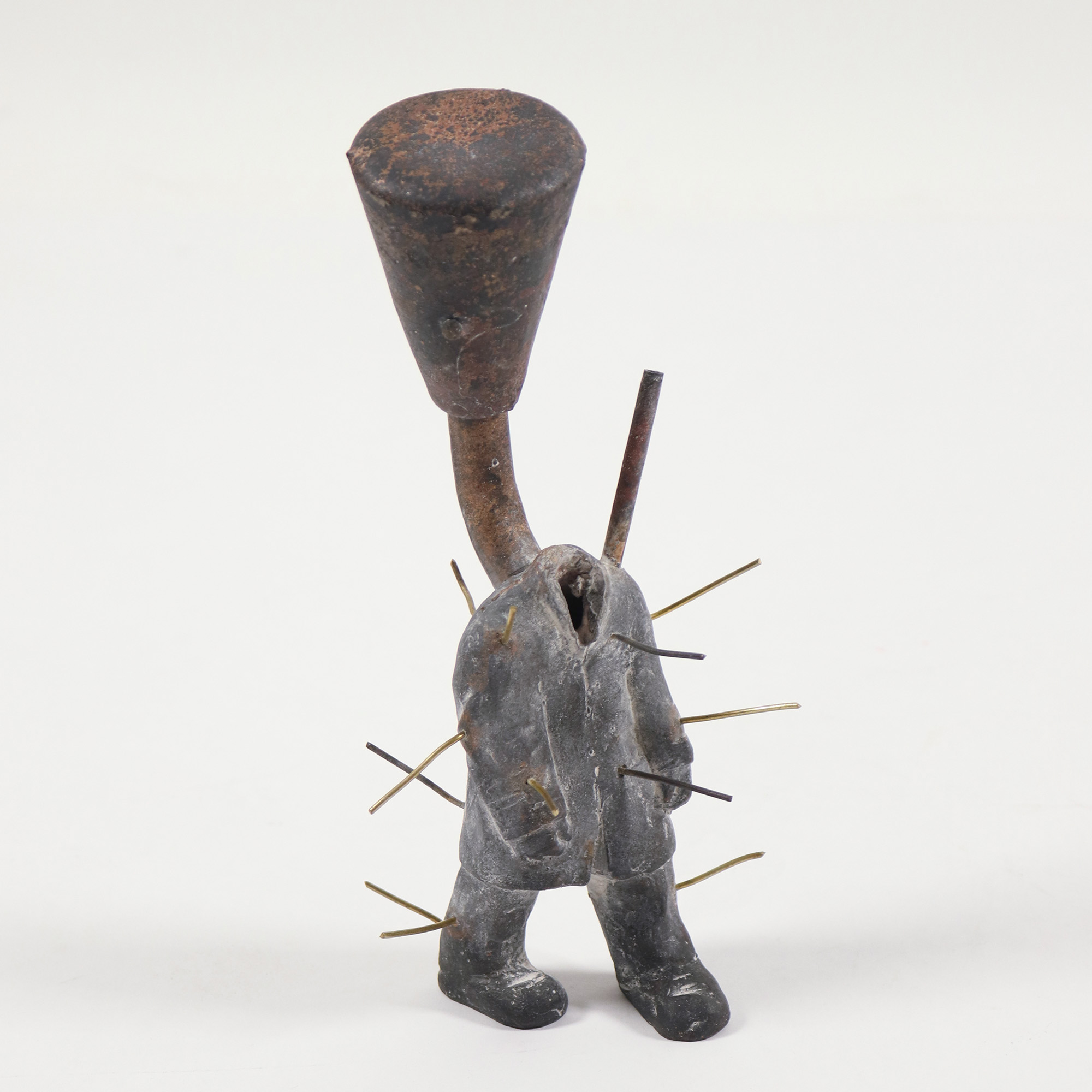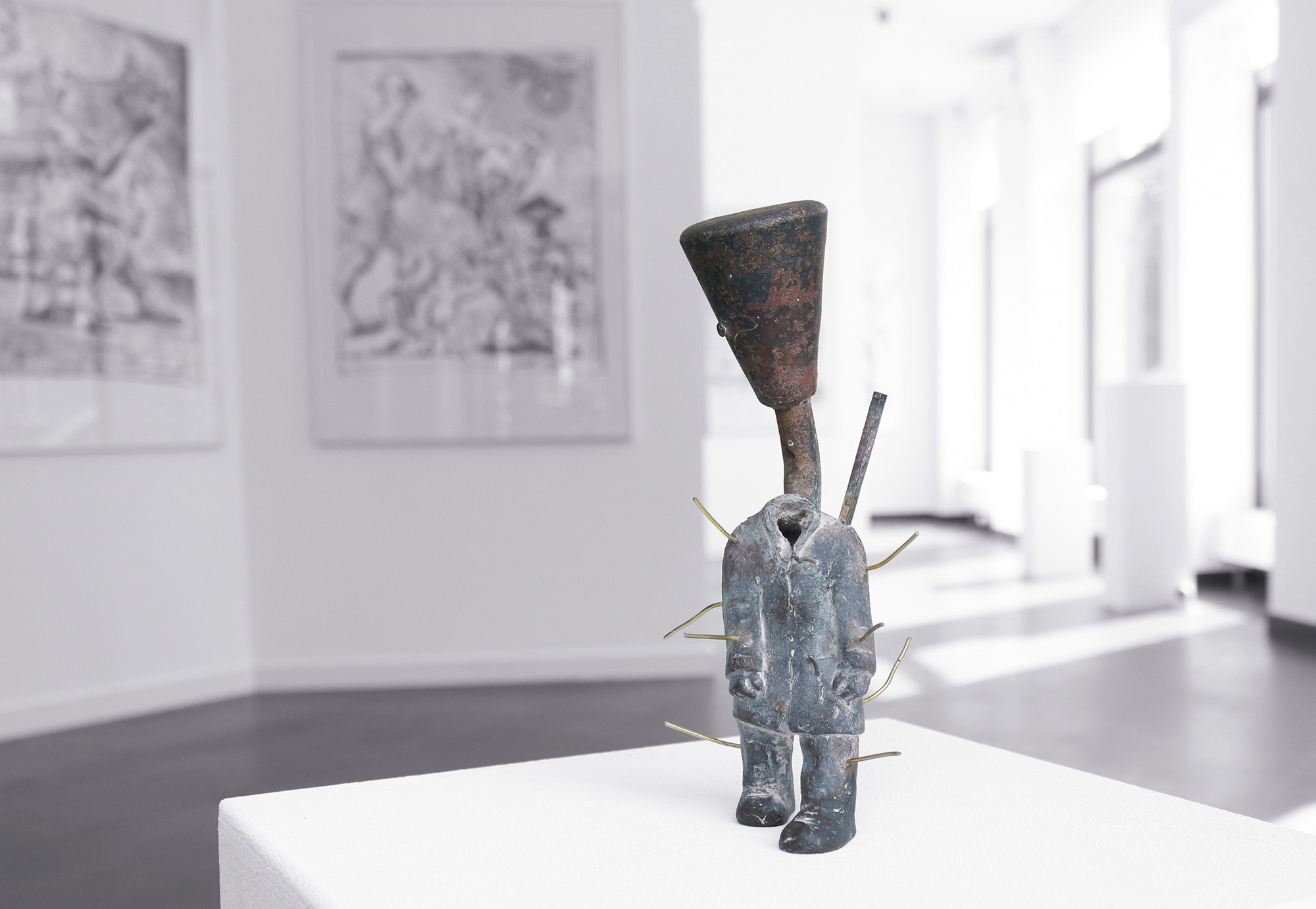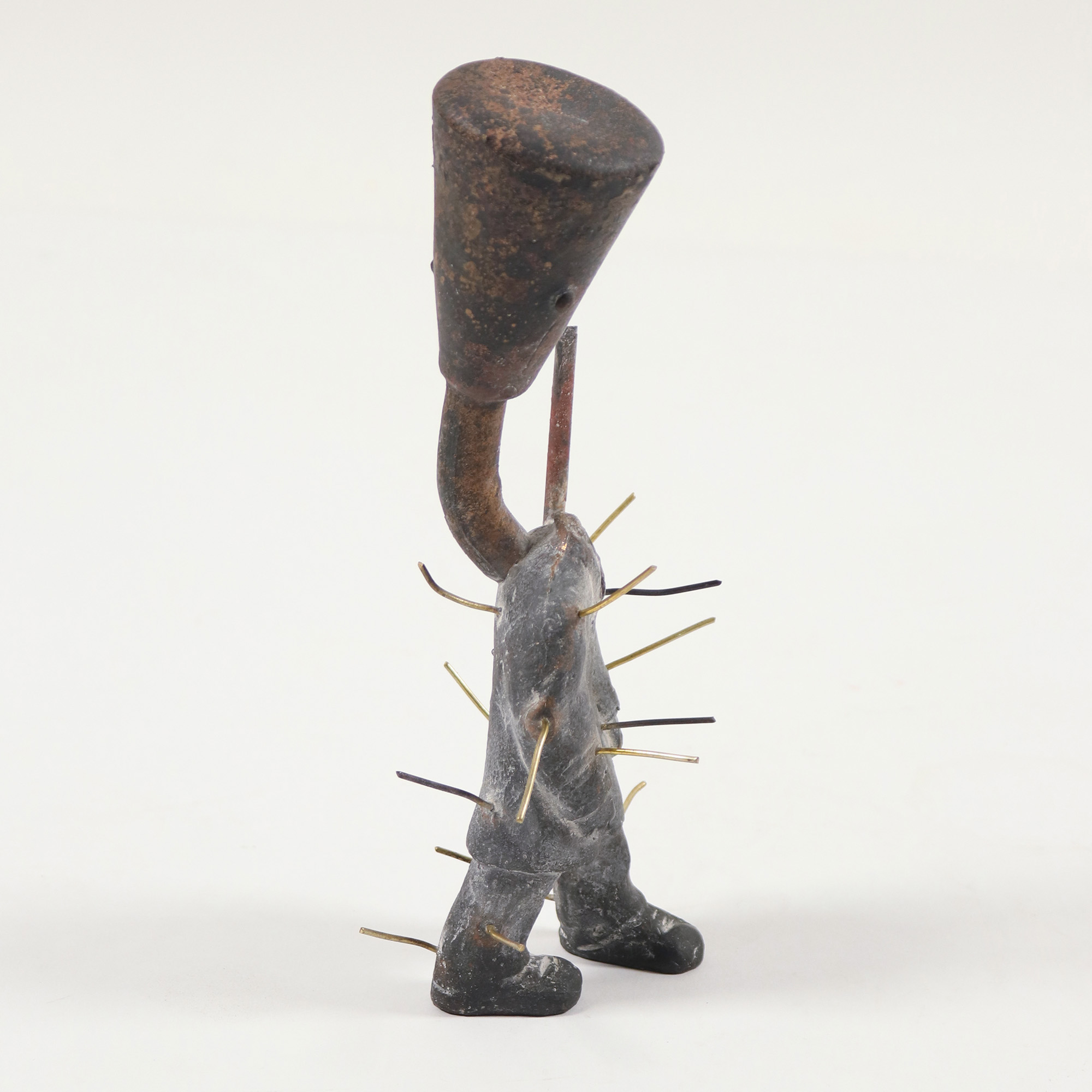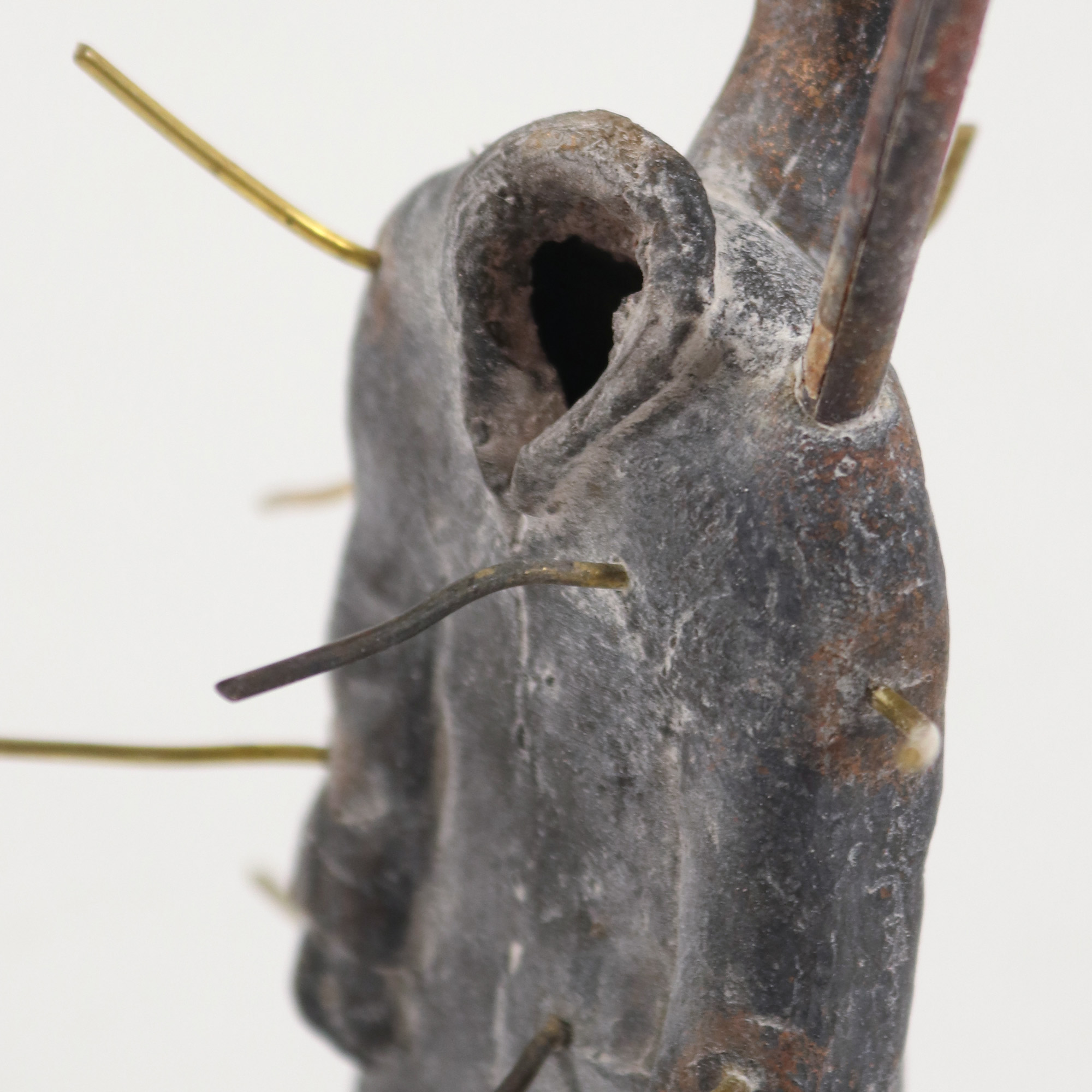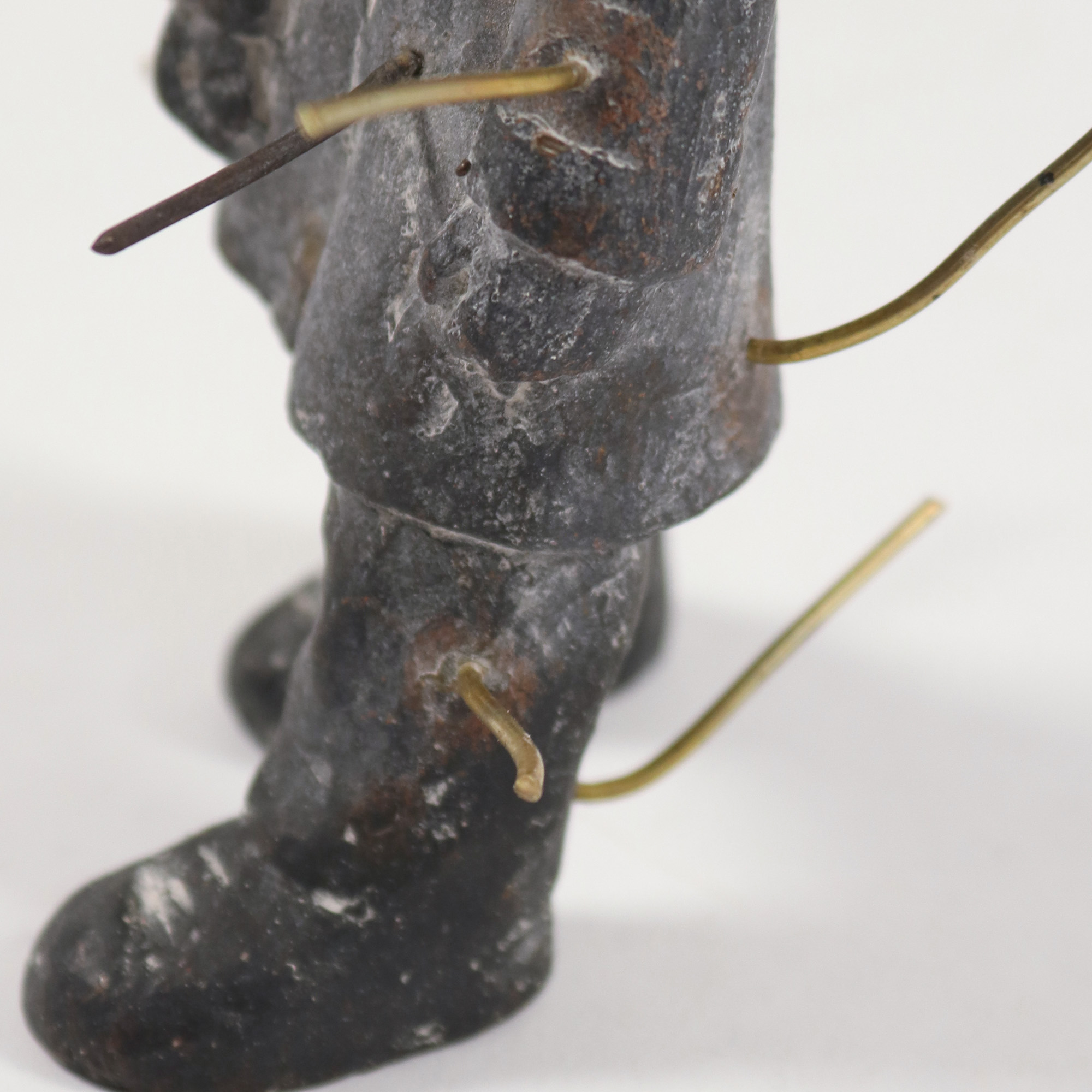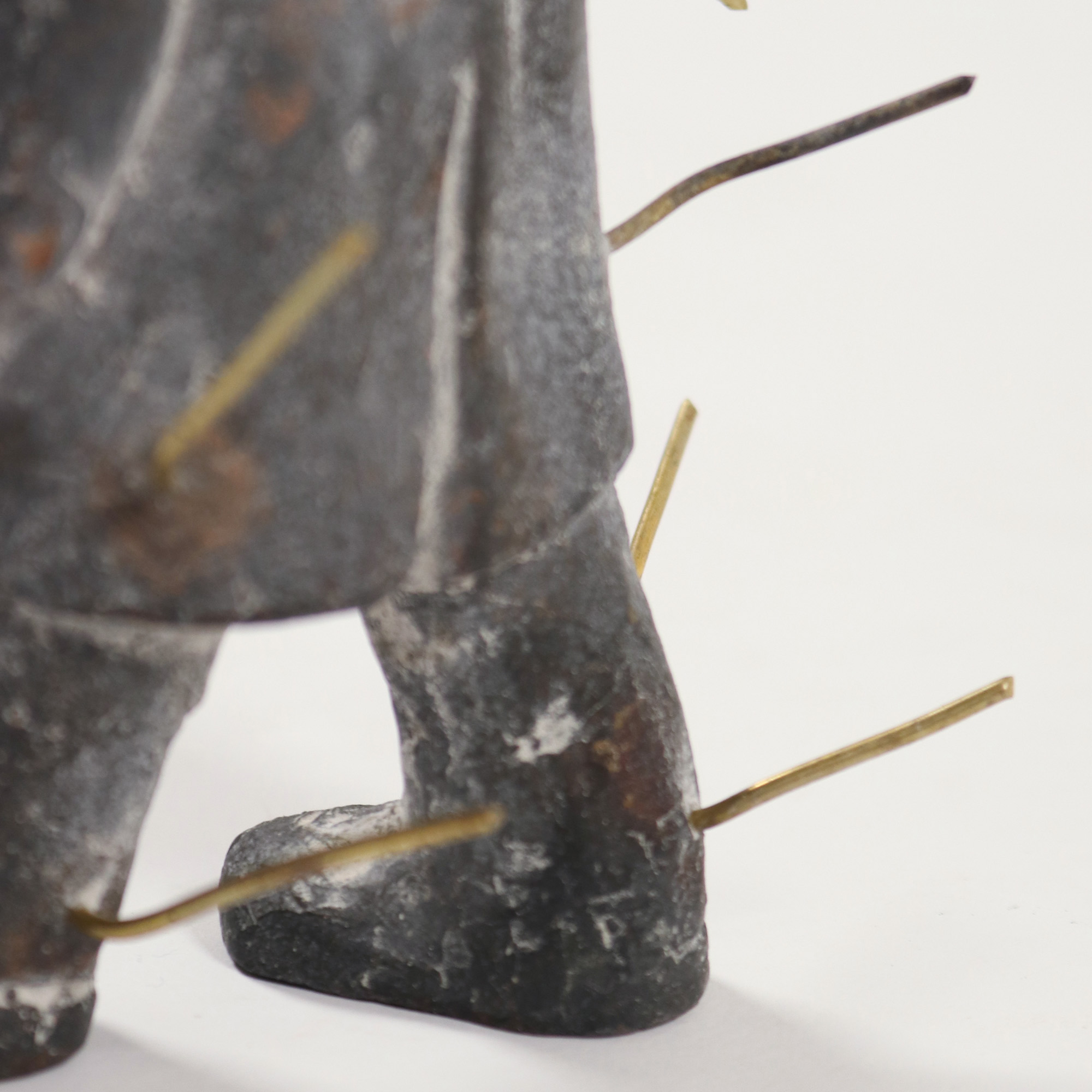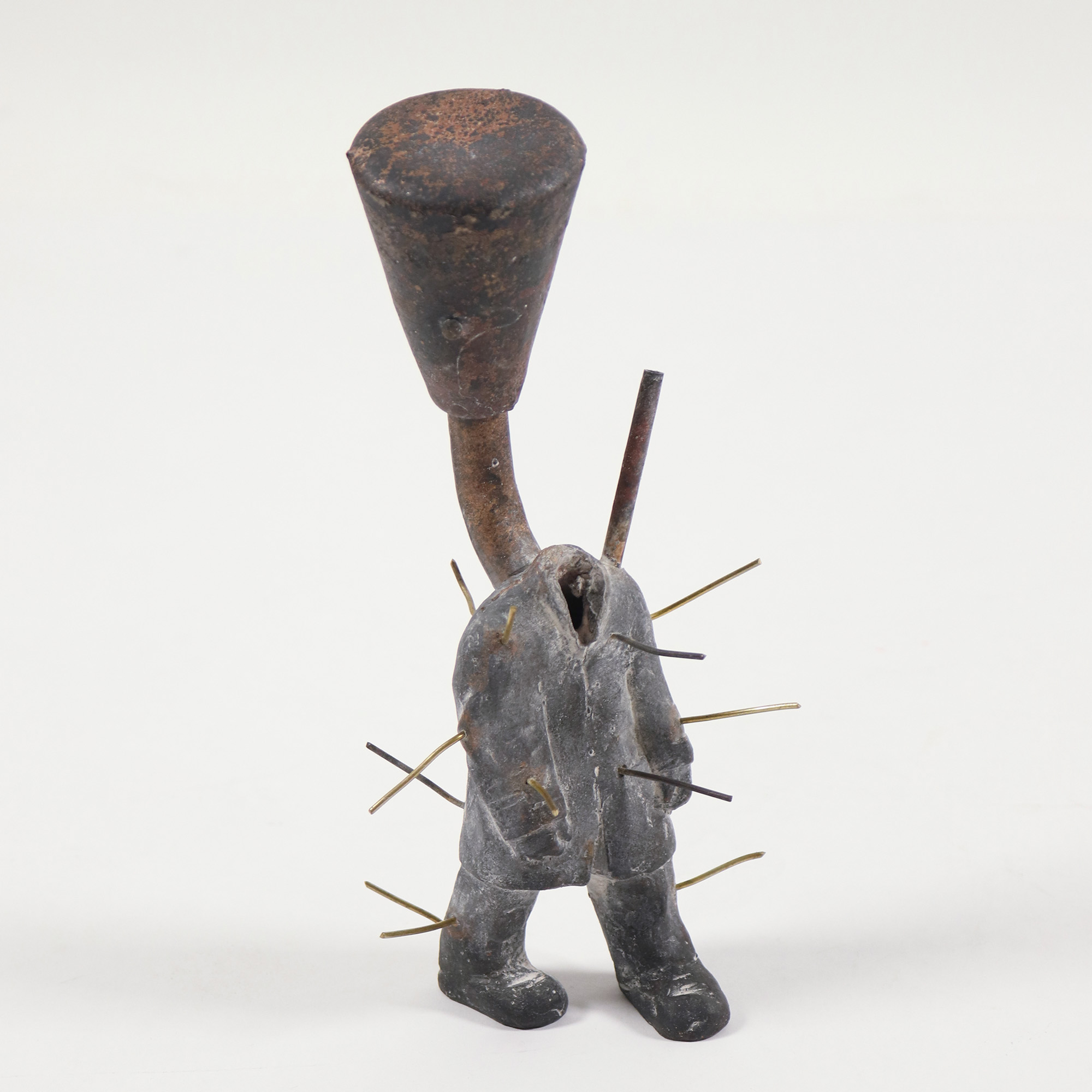| Category | Plastic |
|---|---|
| artist | Neuenhausen, Siegfried |
| year | ca. 1991 |
| Title | Am deutschen Wesen sol die Welt genesen (Dummer Spruch Nr. 24) |
| size 1 | 21,0 x 10,5 x 8,0 cm |
| material | Bronze, patinated, and wire |
| edition | Unique character |
| signature | - |
| publication | - |
| Provenance | Collection Weiss/Ott, Bonn |
Siegfried Neuenhausen Am deutschen Wesen sol die Welt genesen (Dummer Spruch Nr. 24) (ca. 1991)
- Unique character - bronze casting and wire assemblage
- Allegory of German Conditions - Man in Coat without Head
- Realist artists from Hanover
- In object box
€650.00*
- The artwork is available immediately and can be viewed at any time in our gallery.
- Ready for shipment within 2 days.
- Free shipping within Germany.
Informations
condition
|
The Plastic is in a very good condition |
artist
|
Siegfried Neuenhausen wurde 1931 in Dormagen geboren. Neuenhausen studierte von 1952 bis 1959 Malerei an der Kunstakademie Düsseldorf und belegte gleichzeitig Philosophie an der Universität zu Köln. Von 1956 bis 1960 erhielt er ein Stipendium der Studienstiftung des deutschen Volkes. Danach war er von 1961 bis 1964 als Kunsterzieher in Hannover tätig. Ab 1964 nahm er eine Lehrtätigkeit an der Hochschule für Bildende Künste Braunschweig war. 1990 erhielt er eine Gastprofessur in San Antonio/Texas und 1996 eine Gastprofessur in Bandung (Indonesien). Die Werke Neuenhausens zeigen gesellschaftliche Widersprüche, orientieren sich an Themen der Gesellschaftspolitik und nutzen Kunst zur Emanzipation des Menschen. Quelle: Dieser Text basiert auf dem Artikel Siegfried Neuenhausen aus der freien Enzyklopädie Wikipedia und steht unter der GNU-Lizenz für freie Dokumentation. Bei Wikipedia ist eine Liste der Autoren verfügbar. |
e.artis safety
Art trade is a matter of trust.
Features and remarks
You are bidding here on an original sculpture by Siegfried Neuenhausen.
With his well-known ironic-critical spirit, Neuenhausen creates a wonderful allegory on German conditions. We see a man in an overcoat, the allegorical figure of the common man, spiked with metal spikes, but hollow inside and without a head. Above the figure stands a massive funnel-shaped body, like a lever or weight at the same time.
The surface of the bronze figure is probably deliberately covered by the white, rough veil of the casting. In contrast, the wires, which were probably added later, shine golden and the funnel is patinated brown.
Because of the way it was made, it is probably a unique object. There is a documented sculpture from 1991, but it was made without the more elaborate wires.

